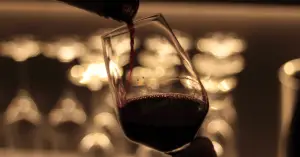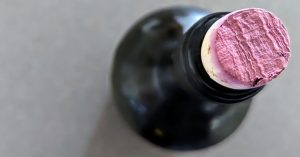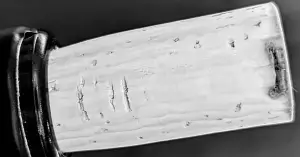Alcohol’s Role in Wine
| Key Points |
|---|
| Alcohol acts as a solvent, extracting flavors from grape skins. |
| Alcohol influences wine’s body, mouthfeel, and perceived sweetness. |
| Excessive alcohol can overpower flavors and make the wine taste “hot.” |
| Alcohol enhances the perception of sweetness, making the wine fruitier. |
| Alcohol carries volatile aromatic compounds contributing to the wine’s bouquet. |
| High alcohol levels can dominate the wine, masking subtler flavors. |
| Excessive alcohol creates a burning sensation on the palate. |
Have you ever wondered how alcohol impacts the taste, structure, and aging potential of your favorite vino?
Alcohol in wine gives it body (weight or mouthfeel) and enhances aromatics. The level of alcohol will interact with food flavors affecting how your food and wine taste together. Alcohol in wine also acts as a preservative helping wine age.
Whether you’re a beginner or a seasoned sipper, here’s what you need to know about how alcohol affects wine. So, grab a glass, and let’s dive in!
- How Does Wine Become Alcoholic?
- How Much Alcohol Is in Wine?
- Alcohol’s Impact on Wine Flavor and Structure
- Alcohol Level in Wine and Its Effects
- Alcohol Level and Food Pairing with Wine
- How to Read the Alcohol Level on a Bottle of Wine
- Who Should Be Mindful of Alcohol Level in Wine
- Final Thoughts – You Can’t Have Wine without Alcohol
How Does Wine Become Alcoholic?
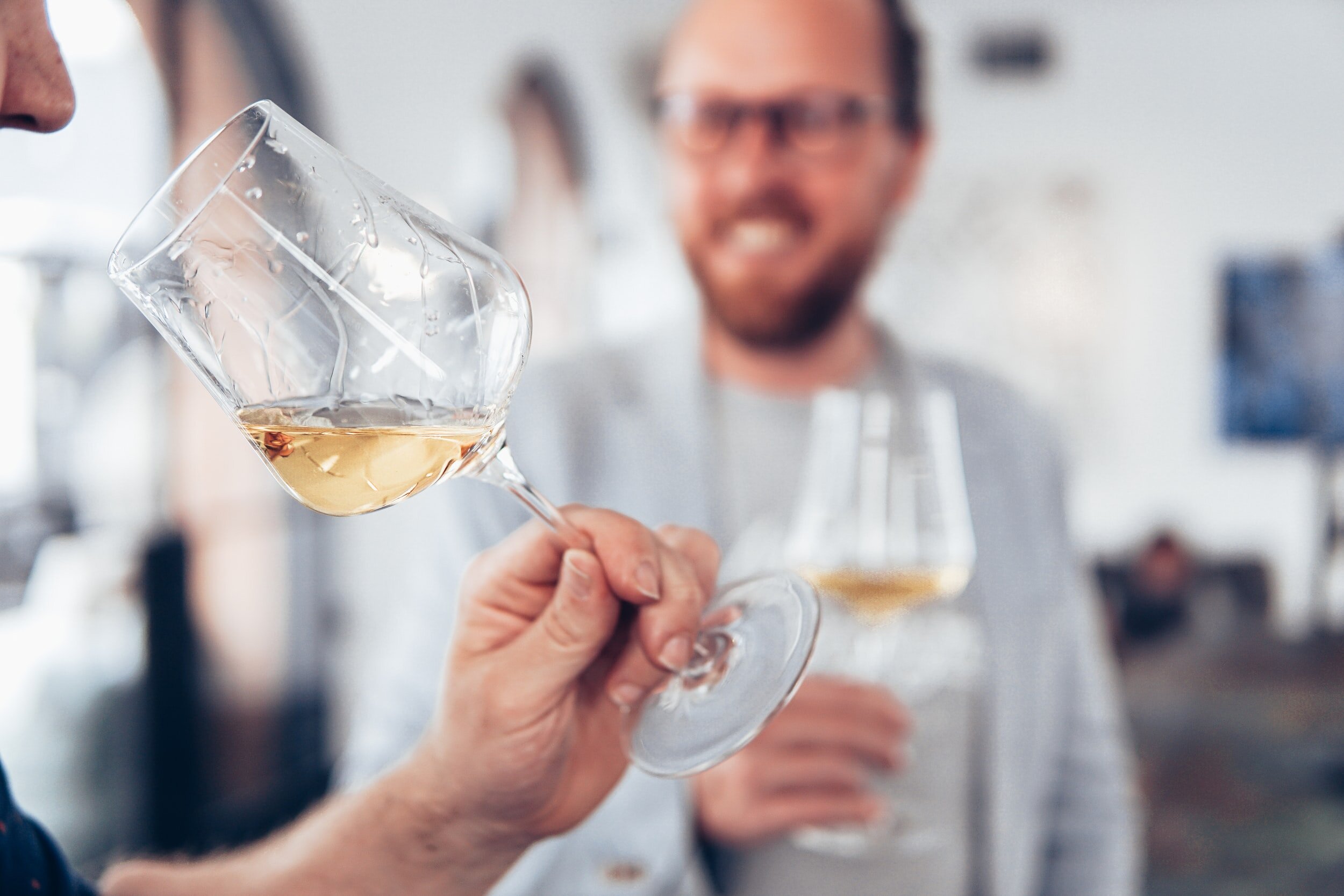
Wine becomes alcoholic through a process called fermentation. It all starts with grapes or other fruits that contain natural sugars. When these sugars come into contact with yeast, a microscopic organism, they undergo a chemical reaction. Yeast consumes the sugars and converts them into alcohol. The more sugar there is in the grapes (the riper the fruit), the higher the potential alcohol of the final wine.
Helpful Tip: Click here for a deeper dive into the art and science of wine fermentation.
How Much Alcohol Is in Wine?
Does Wine Have a Lot of Alcohol?
You might be surprised to learn that the alcohol content in wine can vary. Most wines fall within the range of 12% to 15% alcohol by volume (ABV), but there are exceptions.
For example, delicate Moscato d’Asti usually hovers around 5.5% ABV, making it a wonderful choice for those seeking a light and refreshing sip. Then you have those powerhouse Zinfandels that can reach up to 16% ABV, offering a bold and robust experience.
Fun Fact: Did you know that some dessert wines, like Port or Madeira, can contain as much as 20% ABV? They pack a punch of sweetness and complexity, making them perfect for after-dinner indulgence. (Check out these posts on Port FAQs and an introduction to Madeira to jump into the world of fortified wines.)
What Kind of Alcohol is in Wine?
When we talk about the alcohol in wine, we’re referring to ethanol. Ethanol is the primary alcohol present in wine, responsible for the intoxicating effects and tipsy toasts.
Rest assured, there’s no methanol lurking in your glass of wine!
Fun Fact: Ethanol, the “good alcohol” in wine, is the result of the fermentation process, where yeast converts sugar into alcohol and carbon dioxide. Cheers to those tiny, hardworking yeasty boys! Go check out how wine fermentation works (it’s a little geeky, but may just be your thing.)
Alcohol’s Impact on Wine Flavor and Structure

Alcohol plays a significant role in shaping a wine’s taste and structure. It acts as a solvent, extracting flavors from the grape skins and influencing the overall flavor profile.
Additionally, alcohol contributes to the wine’s body, mouthfeel, and perceived sweetness. However, an excessive amount of alcohol can overpower other flavors and make the wine taste “hot.”
Alcohol’s influence on wine flavor is remarkable. It can enhance the perception of sweetness, making a wine taste fruitier and more rounded.
If you’ve ever pumped your own gasoline, you know how ethanol evaporates the aromas of petrol.
The same thing happens in wine. The alcohol also carries volatile aromatic compounds that contribute to the wine’s bouquet and complexity.
However, when the alcohol level is too high, it can dominate the wine, masking subtler flavors and creating a burning sensation on the palate.
When you hear the word “structure” in wine, one part of this is the alcohol.
Alcohol provides a sense of weight and viscosity to the wine. Higher alcohol levels can give a wine a fuller body and a more substantial mouthfeel. This can be desirable in certain styles, such as rich, full-bodied red wines. However, excessive alcohol can also make your wine feel unbalanced and overwhelming.
Alcohol Level in Wine and Its Effects
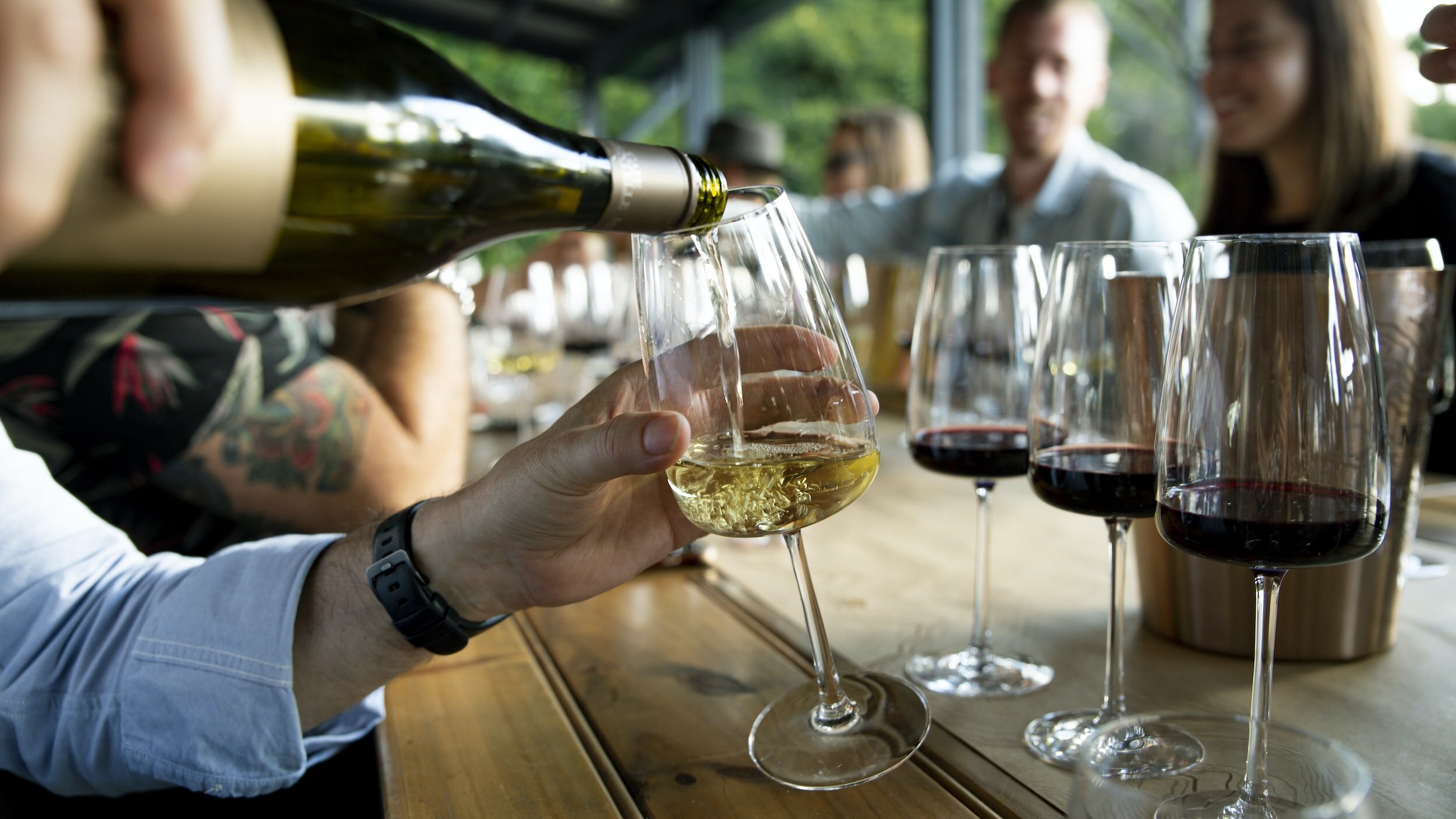
The alcohol level in wine affects not only its flavor and structure but also its aging potential.
Alcohol acts as a preservative.
Wines with higher alcohol levels tend to have more body and structure, allowing them to age gracefully. The alcohol acts as a preservative, helping to protect the wine from oxidation and spoilage over time.
When it comes to aging potential, a robust Cabernet Sauvignon from Napa Valley with 14% ABV can develop complexity and depth as it matures in the bottle. The alcohol contributes to the wine’s structure, allowing it to integrate with the tannins and develop secondary and tertiary flavors over the years.
But a light-bodied, low-alcohol wine may not have the same aging potential – it doesn’t have the same level of alcohol to help preserve the pleasant flavors of the wine. So drink up!
Fun Fact: The alcohol in wine can act as a time capsule, preserving the flavors and nuances of the grapes from the year it was made. Aging wine is like savoring a piece of history in every sip. Interested in building a wine cellar? Go explore this post: Does Wine Go Up in Value
Alcohol Level and Food Pairing with Wine
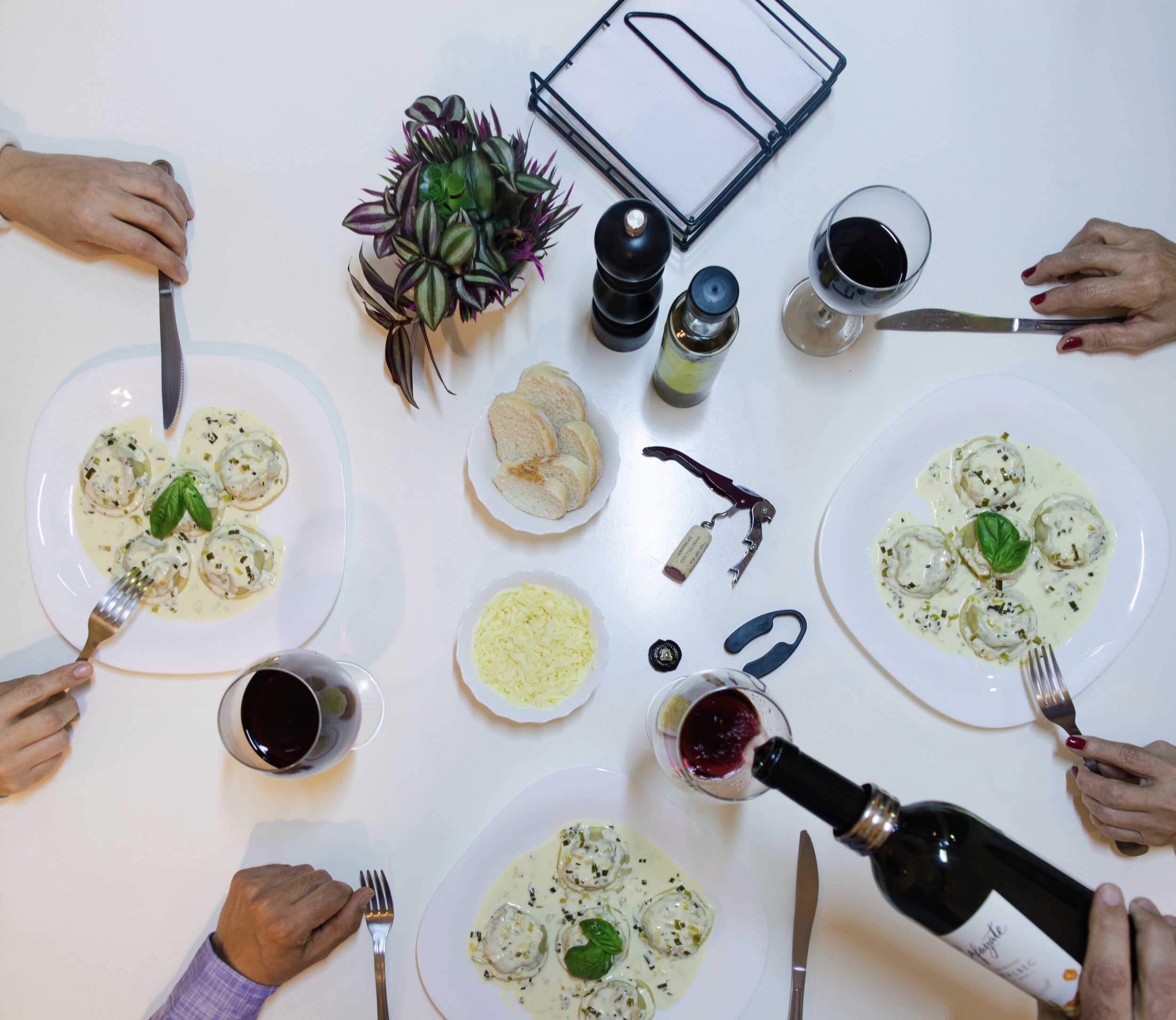
The alcohol content in wine significantly impacts food pairings. High-alcohol wines can complement rich, bold dishes, such as grilled meats, spicy cuisines, or aged cheeses. The intensity of the wine’s flavors can match the robustness of the food, creating a harmonious pairing experience.
Example: A high-alcohol Zinfandel with its bold fruit flavors and spicy notes can stand up to a hearty steak or a plate of barbecued ribs. The richness of the wine can complement the savory and smoky flavors of the meat, creating a delightful combination.
But when pairing with delicate or lighter fare, it’s often best to opt for wines with lower alcohol levels to avoid dominating the food.
A light-bodied Pinot Grigio or a crisp Sauvignon Blanc can be a better choice for pairing with seafood, salads, or light pasta dishes. The lower alcohol allows the food flavors to shine without overwhelming them.
Fun Fact: High-alcohol wines can be excellent companions for hearty dishes, barbecues, or when you want a wine that can stand up to bold flavors. Here’s a post that gives a great overview of pairing food and wine flavors for a winning combination every time.
How to Read the Alcohol Level on a Bottle of Wine
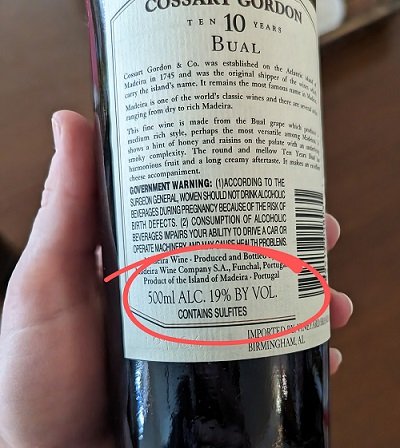
Deciphering the alcohol content on a wine label is a breeze. Look for the ABV percentage, usually listed prominently on the label or the back of the bottle.
This percentage is the amount of alcohol present in the wine, allowing you to make an informed decision based on your preferences.
Keep in mind that the ABV can vary slightly from the labeled percentage due to winemaking processes and regulations. But it’s still a reliable indicator of the wine’s approximate alcohol level.
Who Should Be Mindful of Alcohol Level in Wine

While wine can be a delightful indulgence, some individuals may want to be mindful of the alcohol level in their wine. This includes:
- those with certain health conditions
- individuals watching their alcohol consumption, or
- people who may be more sensitive to the effects of alcohol
Luckily, there are plenty of low-alcohol options available to enjoy without compromising taste or experience.
Looking for a lower-alcohol wine option? Here are some excellent choices:
- Riesling (8.5%-11.5% ABV)
- Moscato (5.5%-7.5% ABV)
- Vinho Verde (9%-11.5% ABV)
Personal Note: I love Moscato in the summer. It’s an easy sipping wine and you can drink it all day thanks to its low alcohol content. This is a super-friendly wine.
Final Thoughts – You Can’t Have Wine without Alcohol
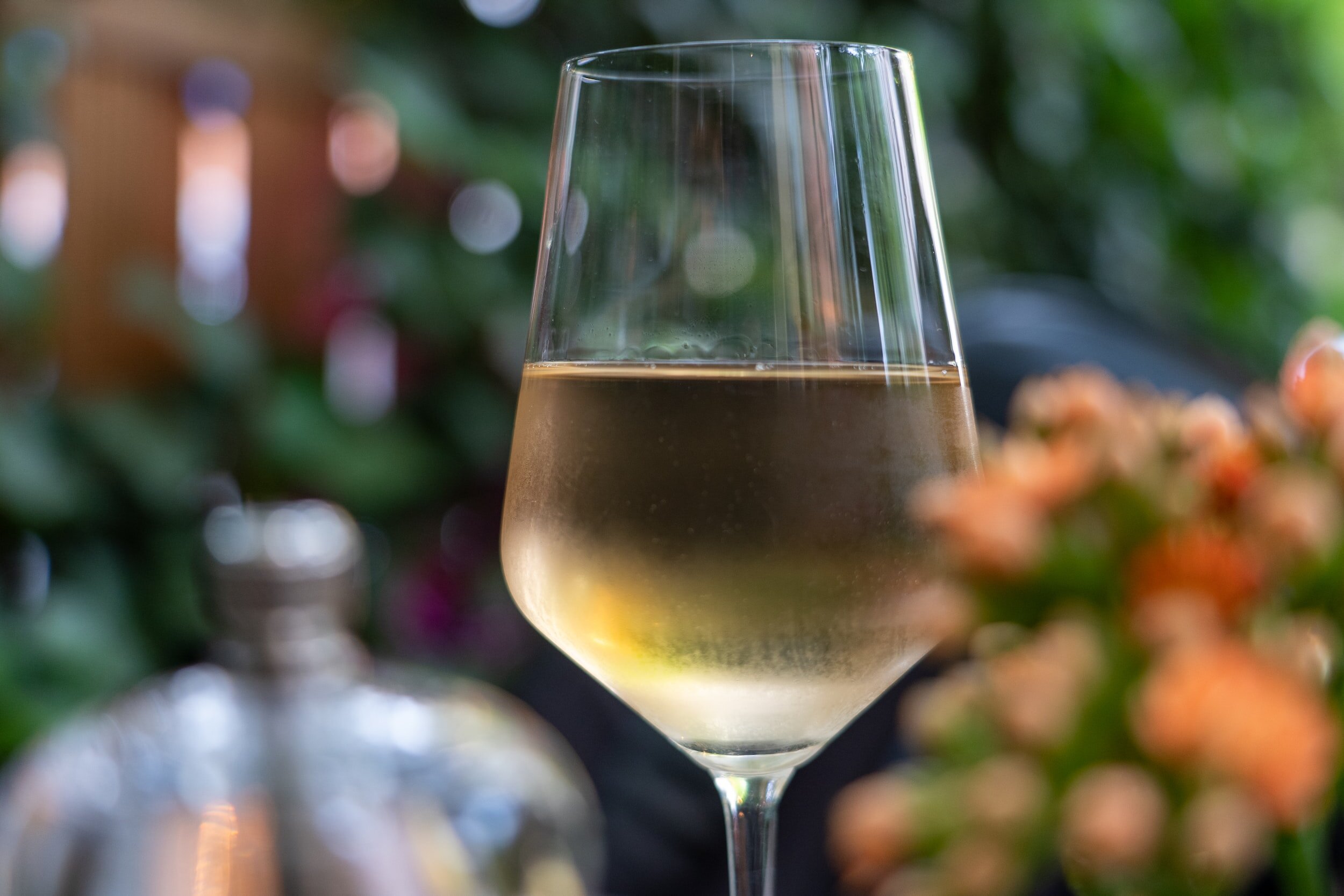
Alcohol in wine plays a central role in how you experience your wine. From the texture and sensory response to the aromatics and flavors, alcohol helps deliver the magic in your glass.
Different wine styles have different levels of alcohol. This is one reason why wines can taste so distinctive.
If you’re sensitive to alcohol or watching your alcohol consumption, seek out those lower-alcohol wines.
Thirsty for More?
If you’re just getting started with wine, go check this post on some of the world’s foremost wine regions and their signature wine styles.
Here’s a post on how to host a DIY tasting for beginners – I highly recommend this strategy to get into wine and broaden your knowledge quickly.
And check out this post on how to read a wine label. Always a helpful skill.

